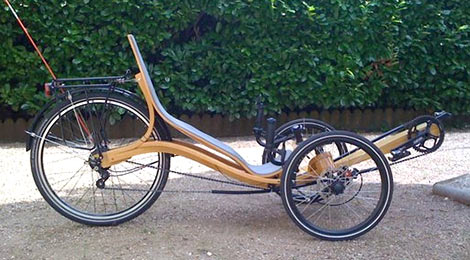The earliest bicycles were made from wood. Nearly two centuries later, some garage tinkerers still turn to this most traditional of materials for their own creations, since welding one requires experience and tools beyond the reach of many. Resembling Gilligan’s Island props, the resulting bikes are both artistic and great fun, but not very practical for real use; often heavy, ill-fitting or lacking durability.
[Boris Beaulant’s] birch laminate Zelo, on the other hand, has cleaner lines than anything you’d see in an IKEA showroom. Not content with an ordinary two-wheeler, he’s tackled a three-wheeled recumbent trike, which requires even finer tolerances. Two months and over 1,300 miles later, the trike is still rolling strong through the French countryside, proving its mettle as legitimate transportation and not just a garage novelty. [Beaulant’s] build log (Google translation here) offers some insights into the development of this masterpiece, starting with prior woodworking projects (furniture, rolling toys and a children’s bike) and finding clever solutions to problems such as creating a mold of his own back for a custom-contoured seat.















